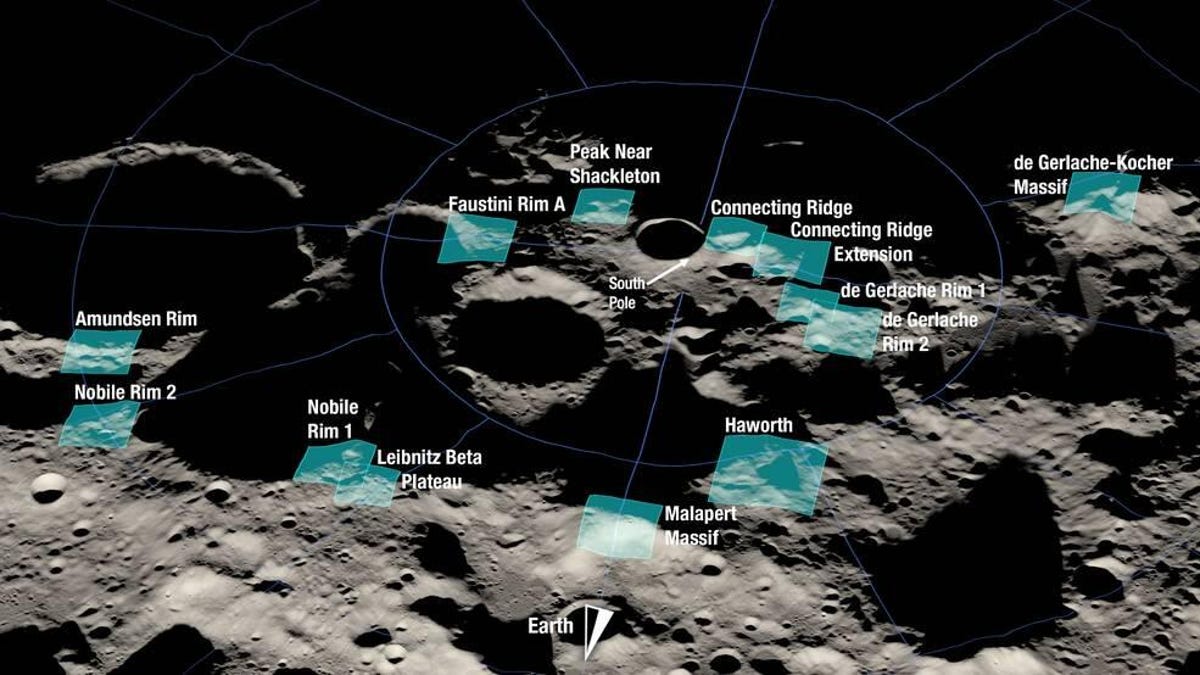NASA Moon Mission: Here's Where Artemis III Could Land
Astronauts will explore the untouched lunar South Pole in 2025.

The 13 potential landing areas for NASA's Artemis III mission to the moon.
NASA has announced 13 places where it could land the Artemis III mission as it prepares to send people back to the moon. All 13 sites are near the lunar South Pole, which is permanently shadowed and so far unexplored, NASA said Friday.
The Artemis III lunar mission will be looking to collect samples and study the water ice at the moon's South Pole. The Artemis III landing, set to take place in 2025, will also see the first woman on the moon.
"We are one giant leap closer to returning humans to the moon," said Mark Kirasich, NASA deputy associate administrator for the Artemis Campaign Development Division, on Friday. "It will be unlike any mission that's come before as astronauts venture into dark areas previously unexplored by humans and lay the groundwork for future long-term stays."
Here are the 13 potential landing regions on the moon:
- Faustini Rim A.
- Peak Near Shackleton.
- Connecting Ridge.
- Connecting Ridge Extension.
- De Gerlache Rim 1.
- De Gerlache Rim 2.
- De Gerlache-Kocher Massif.
- Haworth.
- Malapert Massif.
- Leibnitz Beta Plateau.
- Nobile Rim 1.
- Nobile Rim 2.
- Amundsen Rim.
The range of regions allows for landing at various times of the year, so the launch date can be flexible. To select the zones, a NASA team looked at data from the Lunar Reconnaissance Orbiter and other scientific research on terrain, lighting conditions for continuous sunlight and the ability to communicate with Earth.
In looking at accessibility for landing, NASA also "considered combined capabilities of the Space Launch System rocket, the Orion spacecraft and the SpaceX-provided Starship human landing system."
The mission will spend a planned 6.5 days on the surface of the moon. NASA will choose the final region for landing once the launch date is set.
The Artemis I mission, which is set to take off on Aug. 29, will come within 60 miles of the surface of the moon to test lunar gravity and radiation, take pictures and deploy CubeSats. The Artemis II mission is set to carry astronauts around the moon again without attempting a landing, and has a targeted launch of May 2024.

